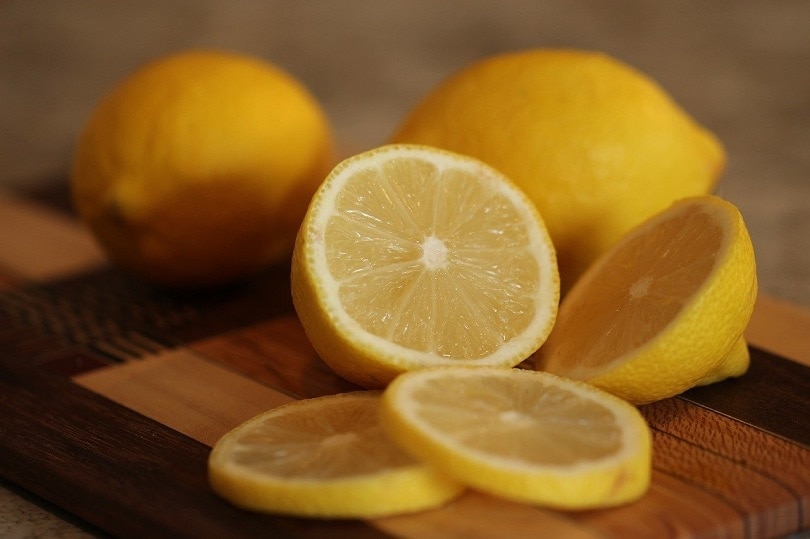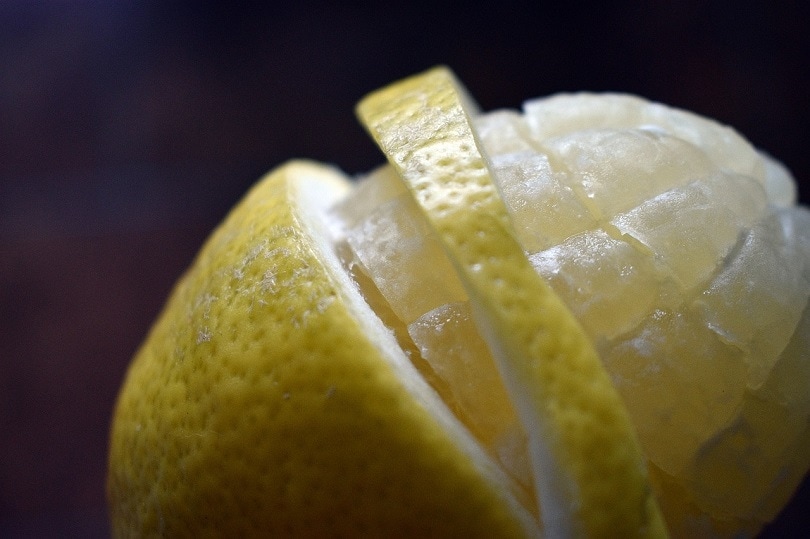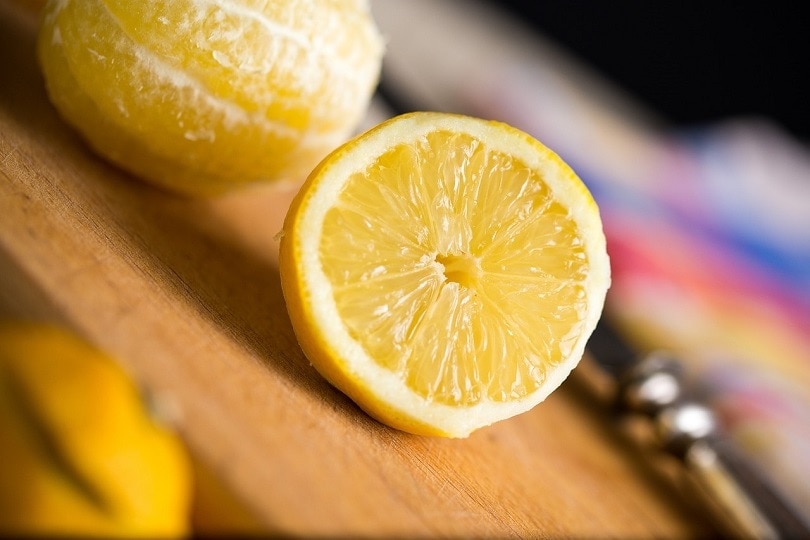Do You Need to Peel Lemons Before Juicing? (A Complete Guide)
-
Nicole Wells
- Last updated:

If you have come to the popular conclusion that consuming the recommended daily portion of fruits and vegetables is better accomplished with a glass and a straw—we agree! Juicing is fast becoming the most effective way to get all of your vitamins and minerals without the yucky taste of kale and broccoli. That being said, many people wonder whether the peel (or rind) of fruit is okay to put in the juicer. When it comes to lemons, the answer is a resounding yes!
Although there is no need to peel your lemons before juicing, as well as some benefits that may make a difference to your…juicing pleasure, on the flip side, you will find some disadvantages to tossing lemons in fully dressed.
In the article below, we will talk about the pros and cons of peeling a lemon pre-juicer. Along with that, we will add some tips on what to do with the peel if you choose to discard it, and what type of juicer you should use if you wish to leave your lemon peels attached.
The Advantages of NOT Peeling Lemons

Not peeling the rind off a lemon has more benefits than just making it an easier way to drink fresh lemonade. Let’s take a look at some of the advantages that may help sway your peeling decision.
- Less messy: Though we already mentioned this point, we wanted to throw it in for good measure. Not peeling your lemons is quicker, easier, less messy, and potentially safer. There is no need to fumble with a paring knife or run through a whole roll of paper towels.
- Added nutrients: This is probably the biggest benefit of leaving the skin intact. The peel of a lemon (like most citrus fruit) contains the most nutrients. Lemon rinds are high in antioxidants, antibacterial compounds, and vitamin C. They help fight illnesses, such as bacterial infections, and reduce the risk of certain cancers and heart disease. Vitamin C alone works to boost the immune system, lowers blood pressure, and even helps with your complexion.
- More pulp: Not everyone enjoys pulp in their juice, however, some prefer it. If you are in the latter category, leaving the peel on your lemons before juicing will give you more of a fresh and natural taste.
The Disadvantages of NOT Peeling Lemons
For those who are steady with their paring knife, peeling this citrus fruit may be a better bet. There are some drawbacks to leaving the skin on that cause many juicing fans to opt for a peel-free beverage.
- Pesticides: One of the biggest cons of not dressing down your fruit is the potential consumption of pesticides. Pesticides are widely used on crops throughout the agricultural community. While these chemicals are meant to deter insects from devouring fruits and vegetables, they are also associated with serious health risks for humans. The United States Environmental Agency (EPA) has noted that eating produce that has been chemically treated can cause reproductive issues and several forms of cancer. Many people prefer to peel lemons as the outer skin protects the flesh underneath from pesticides. It is important to note, however, that washing your fruit is typically sufficient to remove any lingering toxins. You also have the option of buying organic lemons that are not treated with any type of chemical.
- Hard on the stomach: Another disadvantage of not peeling your fruit is possible digestive issues. The skin of a lemon can be hard on the stomach, especially if you’re not used to it. If you prefer to leave the rind intact but have not always done so, we recommend peeling at least half of the lemon. This will allow your stomach to become accustomed to the harder-to-digest material.
- Bitter: It’s also important to point out that leaving the skin on your lemon will cause your juice to be more bitter than if you peel it. The same goes for pulp. As we mentioned above, leaving the skin on will give you considerably more pulp in your juice. If this is not to your liking, peeling is probably the better choice.
- Expensive juicers: Finally, leaving the tough peel on your fruit is going to take its toll on your juicer. If you prefer to leave the rind on, you are better off purchasing a hardier appliance; though they can get pricey.

The Best Juicers for Leaving the Peel Intact
As we pointed out, not peeling your lemons can take a toll on your juicer. For that reason, it’s best to find one that can handle the job daily. A masticating (cold press) juicer is typically the best, though it can be more costly than the average juicer.

If you are in the market for a cold press, we like this one from Amazon. Not only is it strong and durable enough to handle all your fruits (unpeeled), it also has a reasonable price tag.
Keep in mind, the majority of citrus juicers will not be sufficient. Typically, these appliances extract the juice from the peel, leaving the rind intact. If you want to get the full benefits of your lemon, an electric model is the way to go.
How to Peel a Lemon for Juicing
Peeling a lemon can be easier than you think as long as you know how to do so properly. If not, you could wind up with a large mess plus some bandaged fingers if you are not careful. To give a helping hand, we have outlined the steps below for peeling your lemon in preparation for juicing.
- Wash your lemons: Even if you plan to remove the skin, you should still rinse your fruit in lukewarm water. This will prevent any pesticide residue from being transferred from the fruit to your hands, which could potentially end up in your juice or other food.
- Prepare the lemon for peeling: First, you want to ensure you have a good paring knife that is not dull, and you feel comfortable working with. Next, cut away the top portion where the stem was attached and the bottom stigma.
- Pare the lemon: There are two ways to pare (peel) your lemon. You can either work around the fruit, or from top to bottom. If you go around, start at the highest point of the peel and pull the knife around the lemon using your thumb to push the blade. To pare vertically, push the blade downwards on the peel one section at a time. Voila!
Whether you are peeling your lemon or keeping it whole, we recommend cutting it into smaller portions before putting it through your juicer. You will also want to remove any seeds. This prevents your machine from jamming, plus it will keep it working efficiently longer.
Other Ways to Use Lemon Peels
Just because you decide to remove the peel does not mean you have to waste that portion of the fruit. There are several other ways the peel can be utilized. Take a look at these suggestions for getting the most out of your lemon’s skin after you have peeled it for juicing.
- Cooking: Many delicious recipes call for lemon zest, and it’s one of the most popular ways to make use of the skin. To zest your lemon, use a cheese grater (or lemon zester if you have one) to grate the peel into an edible material. Some great dishes you can add lemon zest to are lemon chicken, spaghetti and meatballs (try a bit in your meatballs!), barbeque chicken, creamy shrimp, pizza, fettuccine with asparagus, and many more!
- Baking: Baking is another popular option. You can sprinkle some fresh lemon zest in your orange and cranberry muffins, ginger-citrus cookies, pizzettes, key lime pie, and even brownies. Not only are you adding a kick to your dessert, but you are also getting the nutrients along with it!
- Toppings: Whether you are an aspiring cook or just like an aesthetically pleasing meal, adding some lemon zest to the top of a salad, sprinkled over soup, or to the top of a meal, will make quite an impression on your family and guests with the addition of the beautiful yellow color.
- Other uses: There are many other ways you can repurpose your leftover rinds. Some people make DIY cleaners and potpourri from lemon peels. You can add them to your tea, use them to get rid of soap scum, and they are great at getting rid of coffee stains.

Conclusion
Peeling your lemons before juicing is a personal preference. While there are many benefits to leaving the rind intact, there are also several reasons many fresh juice drinkers decide to leave it out. However, just because you decide on a lighter, less bitter beverage doesn’t mean those peels have to go to waste. There are many ways to make use of the peel—including adding just a bit to your drink for the added vitamins!
You might also like:
- Do You Need to Peel Carrots Before Juicing? (Complete Guide)
- Do You Need to Peel Ginger Before Juicing? (A Complete Guide)
Featured Image Credit: MiraCosic, Pixabay
Contents


